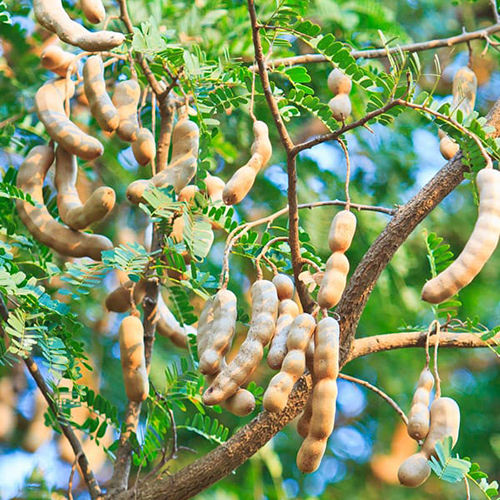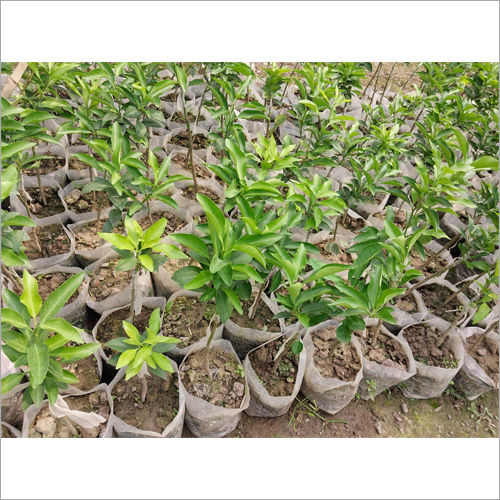Call: 08045479181
Sweet Tamarind Plant
Price 100 INR/ Piece
MOQ : 100 Pieces
Sweet Tamarind Plant Specification
- Type
- Plant
- Variety
- Sweet Tamarind
- Breed
- Grafted / Seed Grown
- Part
- Leaves
- Color
- Green
- Size
- Medium to Tall
- Stem length
- 30-70 cm (approx)
- Shelf Life
- Long (with proper care)
Sweet Tamarind Plant Trade Information
- Minimum Order Quantity
- 100 Pieces
- Payment Terms
- Cash in Advance (CID)
- Supply Ability
- 10000 Pieces Per Month
- Delivery Time
- 7 Days
- Main Domestic Market
- All India
About Sweet Tamarind Plant
Sweet Tamarind Plant (Tamarindus indica) is an important tree of semi-arid tropical conditions and is a long-lived tree. Every part of the plant is used for different purposes. The tamarind tree produces edible, pod-like fruit which is used extensively in cuisines around the world. The sweet tamarind is different from normal tamarind; it is light sweet in taste and can also grow in big pot on terrace or sunny balcony. Sweet Tamarind Plant can be grown in humid to dry hot regions.
Versatile Growth and Usage
Sweet Tamarind Plants serve multiple functions in gardens and agricultural setups: they provide shade, produce edible fruit, and add ornamental value due to their verdant green leaves. Their resilience and moderate height make them suitable for medium to large gardens or landscapes.
Caring for Your Sweet Tamarind Plant
Ensuring healthy growth requires planting in well-drained loamy soil and providing consistent yet moderate watering. Full sunlight is crucial for optimal development, and the plants tolerate a temperature range from 20C to 38C. With attentive care, these trees remain robust and productive year after year.
Propagation and Longevity
Sweet Tamarind Plants can be grown from seeds or through grafting, with both methods yielding robust trees. Grafted varieties may fruit earlier than seed-grown ones. The plant exhibits a long shelf life, and well-established trees can remain productive for many years with routine maintenance.
FAQs of Sweet Tamarind Plant:
Q: How should I plant and care for the Sweet Tamarind Plant?
A: For optimal growth, plant Sweet Tamarind in well-drained loamy soil with access to full sunlight. Water the plant moderately, ensuring that the soil remains moist but not waterlogged. Maintain the recommended temperature range of 20C to 38C and provide occasional fertilization for best results.Q: What is the fruiting age and harvest season for Sweet Tamarind?
A: Typically, the Sweet Tamarind Plant begins to bear fruit when it is 3 to 4 years old. The harvesting season usually spans from winter to early spring, depending on local climate conditions.Q: When is the best time to propagate the Sweet Tamarind Plant?
A: Propagation can be done at the beginning of the growing season using either seeds or grafting techniques. Both methods are effective, though grafted plants may begin producing fruit sooner than those grown from seed.Q: Where is the Sweet Tamarind Plant best suited for planting?
A: This plant thrives in Indian climatic zones with sufficient sunlight and well-drained loamy soil. It is ideal for gardens, orchards, or any open area that receives full sunlight and remains protected from standing water.Q: What are the primary uses and benefits of the Sweet Tamarind Plant?
A: Sweet Tamarind Plants are valued for their edible, tangy-sweet fruit, shade-providing canopy, and ornamental appeal. Additionally, the green leaves enhance landscape aesthetics, and the trees generally have good pest resistance and a long productive lifespan.Q: How can I ensure a longer shelf life and healthy maintenance of my plant?
A: Proper care includes regular, moderate watering, full sunlight exposure, timely pruning, and periodic checks for pests (though the plant has good resistance). Well-maintained trees can thrive and bear fruit for many years.Q: What distinguishes grafted varieties from seed-grown Sweet Tamarind Plants?
A: Grafted Sweet Tamarind Plants usually produce fruit earlier and maintain desirable traits from the parent tree. Seed-grown plants may take longer to fruit but are robust and adaptable to local conditions.
Tell us about your requirement

Price:
Quantity
Select Unit
- 50
- 100
- 200
- 250
- 500
- 1000+
Additional detail
Mobile number
Email
More Products in Fruit Plants Category
Vietman Guava Plant
Price 25 INR / Piece
Minimum Order Quantity : 100 Pieces
Shelf Life : 12 Months
Breed : Hybrid
Variety : Other, Vietman Guava
Part : Leaves
Orange Plant
Price 250 INR / Piece
Minimum Order Quantity : 100 Pieces
Shelf Life : 12 Months
Breed : Citrus sinensis
Variety : Other, Orange
Part : Leaves
Sada Jam Plant
Price 50 INR / Piece
Minimum Order Quantity : 100 Pieces
Shelf Life : 36 Months
Breed : Natural
Variety : Other, Sada Jam
Part : Leaves
Bari one Maltaa Plant
Price 20 INR / Piece
Minimum Order Quantity : 100 Pieces
Shelf Life : Long
Breed : Bari One
Variety : Other, Maltaa
Part : Leaves
 Send Inquiry
Send Inquiry Send Inquiry
Send Inquiry




